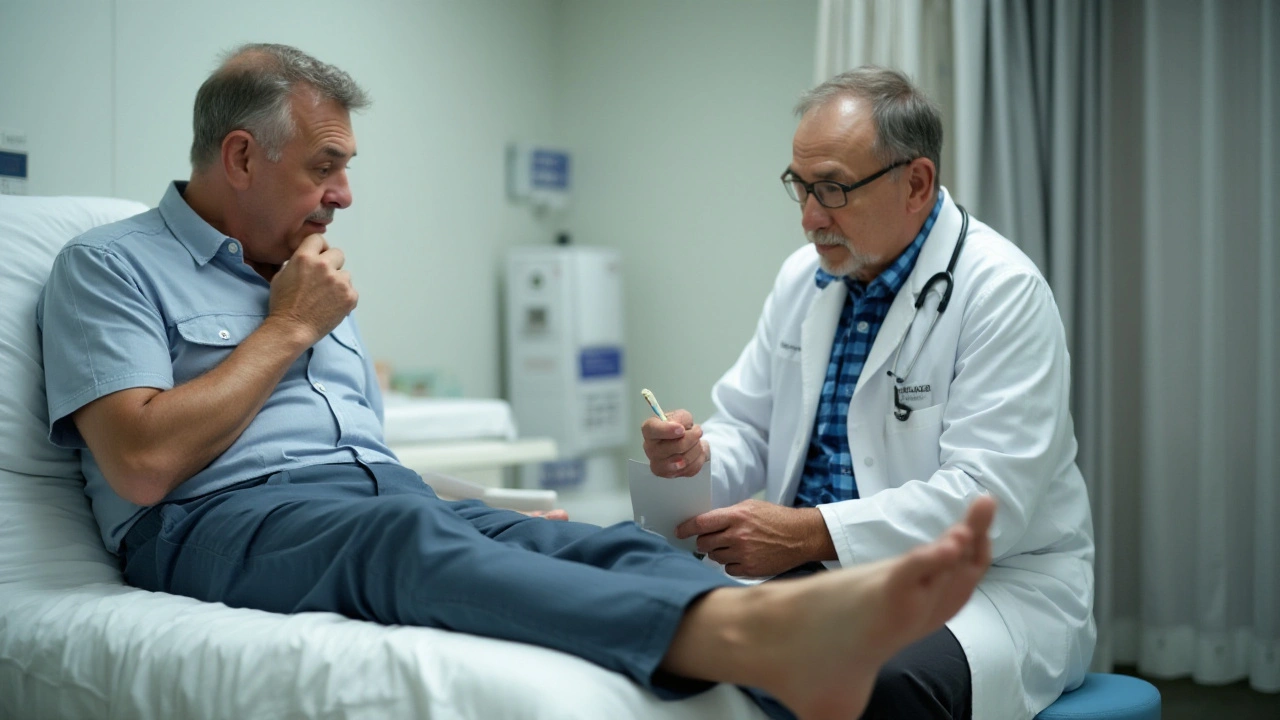Clavulanate for Diabetic Foot Infections – September 2024 Archive
If you or someone you know is dealing with a diabetic foot infection, you’ve probably heard that antibiotics are a must. One of the most effective options is clavulanate, usually paired with amoxicillin. In this post we break down why clavulanate matters, how it fights infection, and what practical steps you can take right now.
How Clavulanate Works
Clavulanate isn’t an antibiotic by itself; it’s a beta‑lactamase inhibitor. Bacteria produce enzymes called beta‑lactamases that break down many antibiotics, rendering them useless. By blocking those enzymes, clavulanate protects the partner drug (like amoxicillin) so it can kill the bacteria.
This combo is especially useful for the mixed infections common in diabetic foot ulcers—think Staphylococcus aureus and anaerobes together. The inhibitor lets the antibiotic reach deeper tissue layers where infection hides. Studies show a faster reduction in bacterial load when clavulanate is added, which means less swelling and quicker healing.
Another benefit is reduced resistance. Because the bacteria can’t easily disable both drugs at once, they’re less likely to develop strong defenses. That doesn’t mean you can skip doctor visits—proper dosing still matters.
Clavulanate comes as part of a fixed‑dose tablet with amoxicillin, usually 125 mg clavulanate paired with 500 mg amoxicillin. The combo is taken twice daily for most infections. If you have kidney problems, your doctor may lower the dose because the drug clears through the kidneys.
Practical Tips for Managing Diabetic Foot Infections
First, get a prescription that includes clavulanate‑amoxicillin. Follow the dosage schedule exactly; missing doses lets bacteria bounce back. Most courses last 7–14 days, but your doctor might adjust based on severity.
Second, keep the wound clean and covered. Wash gently with saline, avoid harsh soaps, and change dressings daily. A clean environment lets the medicine do its job without extra bacterial load.
Third, watch for side effects. Mild stomach upset is common; taking the pill with food helps. If you notice rash, swelling, or breathing trouble, seek help right away—those could be allergic reactions.
Finally, pair medication with good foot care. Inspect your feet each night, use moisturizers on dry skin (but not between toes), and wear proper shoes that don’t rub. Controlling blood sugar also speeds healing, so keep glucose levels as stable as possible.
Track healing by measuring wound size every few days. A shrinking ulcer means the treatment works; if it stays the same or gets worse, contact your healthcare provider immediately. Early adjustments can prevent deeper infection and hospital visits.
Bottom line: clavulanate boosts the power of standard antibiotics, making it a key player in treating diabetic foot infections. By understanding how it works and following simple care steps, you can cut recovery time and lower the risk of complications like amputation.
Got more questions about clavulanate or other meds? StrapCart’s health library has deeper dives on antibiotics, diabetes management, and wound care. Check out our resources for easy‑to‑read guides that fit your busy life.
The Vital Role of Clavulanate in Treating Diabetic Foot Infections
Diabetic foot infections can lead to severe complications if not treated properly. Clavulanate, often combined with other antibiotics, plays a crucial role in managing these infections. This article delves into its effectiveness, how it works, and practical tips for those dealing with diabetic foot issues.
read more

